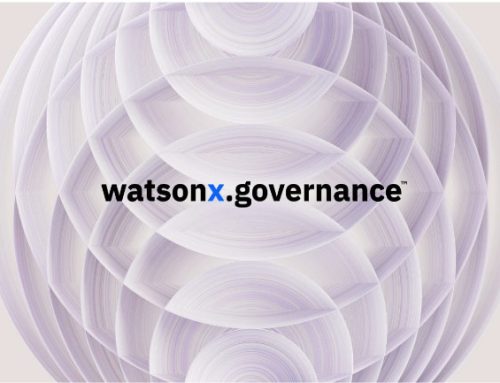
Ransomware-Proof Your AWS Data: 3 Backup Strategies Even Hackers Can’t Crack
The ransomware landscape has reached alarming new heights. U.S. ransomware attacks increased by 149% year over year in the first five weeks of 2025, with 378 reported incidents compared to 152 in 2024. Even more concerning for AWS users, a recent attack in 2024 targeted over 230 million unique cloud environments on Amazon Web Services (AWS).
Traditional backup strategies are failing because they’re accessible through the same compromised credentials that attackers exploit. When hackers infiltrate your AWS environment, they can encrypt or delete your backups just as easily as your production data.
The solution isn’t just more backups. It’s backup strategies that remain untouchable even when attackers have full administrative access to your primary AWS account.
Strategy 1: Immutable backups with AWS backup vault lock
AWS Backup Vault Lock transforms your backups into Write-Once-Read-Many (WORM) storage that cannot be deleted or altered, even by AWS account administrators.
This feature leverages the same immutability principles used in financial compliance systems and creates a legal hold on your data that extends beyond traditional IAM permissions.
The implementation requires configuring minimum and maximum retention periods, with a critical grace period during which modifications are possible. After this window expires, the lock becomes immutable.
Not even AWS Support can override it without destroying the entire vault. The system enforces a changeable period measured in days, after which the configuration becomes permanently locked.
Ransomware operates by encrypting files and demanding payment for decryption keys. With Vault Lock, the backup files exist in a state that cannot be modified by any API call, CLI command, or console action.
Even if attackers obtain root AWS credentials with full administrative privileges, they cannot delete backup recovery points, modify backup configurations, change retention policies, or cancel backup jobs targeting the locked vault.
The immutability is enforced at the AWS service level through cryptographic checksums and distributed consensus mechanisms, not just through IAM permissions that can be bypassed through privilege escalation attacks.
Strategy 2: Air-gapped backups in an isolated AWS account
Air-gapped backups in AWS require creating a completely separate AWS account with no network connectivity to your production environment. This breaks the attack chain that ransomware relies on to spread across your infrastructure through lateral movement techniques.
The architecture demands cross-account IAM role configurations that use external ID conditions and time-based access tokens.
Network isolation must be absolute with no VPC peering connections, Transit Gateway attachments, Direct Connect circuits, or VPN tunnels between the production and backup accounts. All data transfer occurs through secure, authenticated API calls that traverse AWS’s backbone infrastructure.
The isolated account requires separate DNS zones, distinct administrative credentials managed by different identity providers, and independent threat detection systems.
AWS Lambda functions in the backup account automatically validate backup integrity using cryptographic checksums and digital signatures, while Amazon GuardDuty operates with different threat detection rules specifically tuned for backup access patterns.
Multi-factor authentication requirements differ between accounts, and hardware security modules (HSMs) can provide additional cryptographic isolation for backup account credentials. The backup account utilizes separate AWS Organizations structures and billing arrangements to prevent administrative overlap.
Even sophisticated ransomware that establishes persistent access to your primary AWS account cannot traverse to the isolated backup account. The air gap creates an authentication and authorization boundary that requires entirely separate credential compromise through different attack vectors.
Strategy 3: Multi-region replication with S3 versioning
Multi-region replication combined with S3 versioning creates a distributed backup strategy that prevents ransomware from achieving complete data destruction.
Cross-Region Replication (CRR) operates with specific versioning rules that maintain multiple object versions across geographically separated AWS regions, each with independent infrastructure and failure domains.
The replication configuration includes intelligent tiering rules that automatically transition older versions to cost-effective storage classes while maintaining rapid access to recent versions.
Replication Time Control (RTC) ensures that 99.99% of objects replicate within 15 minutes, creating minimal exposure windows for data loss.
MFA Delete functionality requires multi-factor authentication for permanent deletion of object versions, creating an additional authentication barrier that ransomware cannot easily bypass.
The versioning system maintains multiple generations of each object, with configurable lifecycle policies that balance storage costs against recovery requirements.
Object Lock integrates with legal hold capabilities, allowing organizations to place litigation holds on specific data sets that prevent deletion even by privileged users.
The system supports both time-based retention periods and indefinite legal holds that can only be removed through specific administrative processes.
Ransomware campaigns typically focus on specific geographic regions due to legal, linguistic, and operational constraints.
By replicating data across AWS regions in different continents, such as US West (Oregon), Europe (Frankfurt), and Asia Pacific (Sydney), organizations create geographic diversity that most ransomware operations cannot effectively target simultaneously.
Are your current AWS backup strategies truly ransomware-proof, or are they just another target for attackers?
Let the experts at ASB Resources conduct a comprehensive security assessment of your AWS backup architecture and implement enterprise-grade ransomware-resistant strategies that protect your most critical data assets. Schedule a call with one of our experts today!








